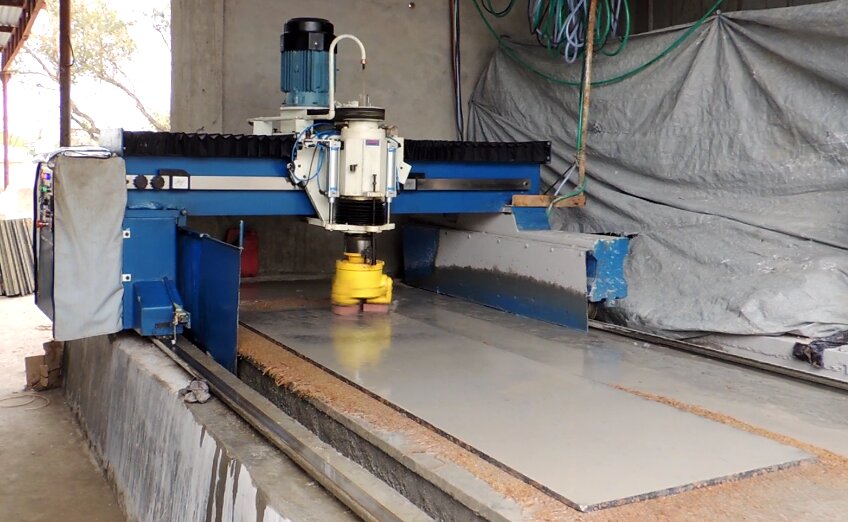Stone fabrication, once reliant on manual craftsmanship and traditional methods, has undergone a revolution with the advent of technology. From quarrying to finishing, digital innovations have transformed every aspect of the stone fabrication process, enhancing efficiency, precision, and creativity. In this article, we delve into the realm of cutting-edge techniques in stone fabrication, exploring how technology is reshaping the industry and pushing the boundaries of design possibilities.
Digital Quarrying and Extraction:
The journey of a stone slab begins in the quarry, where advanced technologies such as 3D scanning, drones, and satellite imaging are revolutionizing the extraction process. These tools enable quarry operators to survey, map, and analyze stone deposits with unprecedented accuracy, optimizing resource management and minimizing environmental impact.
Furthermore, robotic systems equipped with diamond wire saws and high-pressure water jets allow for precise cutting of stone blocks, reducing waste and maximizing yield. By harnessing digital technologies, quarrying operations can achieve greater efficiency, safety, and sustainability, ensuring a steady supply of raw materials for the fabrication industry.
CAD/CAM Design and Modeling:

Once extracted, stone blocks are transported to fabrication facilities, where they undergo a transformation guided by computer-aided design (CAD) and computer-aided manufacturing (CAM) software. These powerful tools enable designers and engineers to create intricate patterns, complex geometries, and custom shapes with unparalleled precision.
CAD software facilitates the creation of detailed 3D models, allowing designers to visualize concepts and explore design iterations before fabrication begins. CAM software then translates these digital designs into machine-readable instructions, guiding automated fabrication equipment such as CNC routers, waterjets, and wire saws.
Advanced Cutting and Shaping Techniques:
Traditional stone cutting techniques, such as sawing and grinding, have been augmented and refined with the introduction of advanced cutting tools and abrasive materials. Waterjet cutting, for example, utilizes a high-pressure stream of water mixed with abrasive particles to precisely cut through stone, ceramics, and other hard materials without generating heat or dust.
Similarly, diamond wire sawing employs a continuous loop of diamond-coated wire to slice through stone blocks with remarkable speed and accuracy, enabling the production of thin slabs and intricate shapes. These cutting-edge techniques not only enhance productivity and efficiency but also expand the design possibilities for architects, designers, and artists.
Precision Finishing and Polishing:
The final stage of stone fabrication involves finishing and polishing, where the surface of the stone is refined to achieve the desired texture, sheen, and appearance. Traditional methods such as hand polishing and buffing have been supplemented by automated polishing machines equipped with advanced abrasives and polishing pads.
Robotic polishing systems, guided by computer algorithms and laser scanning technology, can achieve unparalleled levels of consistency and uniformity, ensuring flawless finishes on large-scale projects. Additionally, digital imaging and color matching techniques allow for precise customization and replication of natural stone patterns and veining.
Integration of Smart Technologies:

As the stone fabrication industry continues to evolve, there is a growing emphasis on integrating smart technologies and automation solutions into production processes. Industry 4.0 principles, such as the Internet of Things (IoT), artificial intelligence (AI), and data analytics, are being leveraged to optimize workflow management, predictive maintenance, and quality control.
For example, IoT-enabled sensors can monitor machine performance in real-time, detecting anomalies and predicting maintenance needs to minimize downtime and maximize productivity. AI algorithms can analyze data from multiple sources to optimize cutting parameters, reduce material waste, and improve overall efficiency.
The integration of technology into stone fabrication has revolutionized the way we design, produce, and interact with stone products. From digital quarrying and CAD/CAM design to advanced cutting and finishing techniques, technology is enabling unprecedented levels of precision, efficiency, and creativity in the fabrication process.
As the industry embraces smart technologies and automation solutions, the possibilities for innovation and collaboration are endless. By harnessing the power of technology, stone fabricators can unlock new opportunities for sustainable growth, while pushing the boundaries of design excellence and craftsmanship in the built environment.

